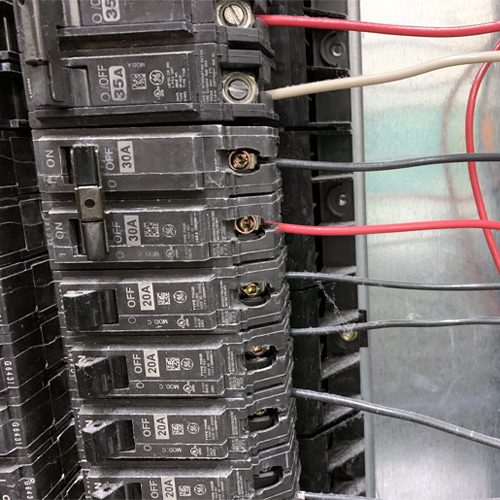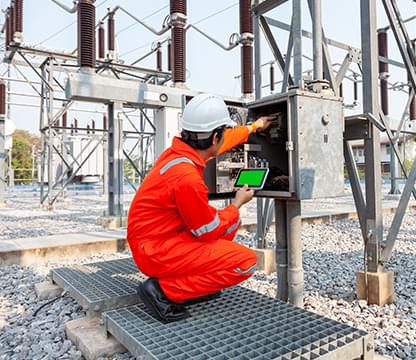Leading Tips for Effective Electrical System Troubleshooting
Troubleshooting electrical systems requires a methodical technique, based in a thorough understanding of electric concepts and safety procedures. The nuances of efficient repairing expand past mere technical understanding; recognizing just how to record findings and prioritize safety can dramatically influence outcomes.
Understand the Basics
Understanding the basics of electrical systems is important for effective troubleshooting, as a solid foundation allows specialists to identify and fix problems a lot more efficiently. An extensive grasp of electrical concepts, such as voltage, existing, resistance, and power, is essential in recognizing the root triggers of problems. Voltage is the electric possible difference that drives current via a circuit, while resistance opposes the flow of current, impacting the total capability of the system.
Familiarity with circuit parts, consisting of resistors, capacitors, diodes, and changes, is also extremely important. Each element plays a distinctive function in circuit actions and can impact performance when malfunctioning. In addition, comprehending collection and parallel circuit arrangements is important, as these plans influence the circulation of voltage and current within the system.
In addition, understanding of safety and security procedures is vital. Professionals should understand potential dangers, such as shock and brief circuits, to execute risk-free troubleshooting practices. By understanding these fundamental concepts, service technicians boost their ability to carry out efficient diagnostics and fixings, ultimately causing boosted performance and dependability of electric systems. This fundamental knowledge is the keystone of effective repairing endeavors.
Gather Necessary Devices
Effective troubleshooting of electrical systems needs the best set of devices to identify and deal with concerns properly. Crucial devices consist of a multimeter, which determines voltage, current, and resistance, permitting for exact examinations of electrical components.
In addition, protected hand tools such as screwdrivers, pliers, and cord strippers are essential for securely manipulating electrical links. It is likewise advisable to have a circuit tester handy to verify the existence of voltage in outlets and cords. For even more facility systems, a thermal imaging cam can help identify overheating elements, showing possible failures.

Follow a Systematic Method
Having gathered go the suitable devices, the next step in troubleshooting electric systems is to adhere to a systematic method. A methodical technique guarantees that technicians can identify mistakes efficiently and precisely, lessening downtime and protecting against unnecessary repairs.
Begin by examining the system's schematic representations and specs. This includes checking each element methodically, starting from the power resource and working in the direction of the lots.
Make use of screening devices, such as multimeters and oscilloscopes, to collect unbiased information regarding voltage, current, and resistance at numerous factors within the system. This empirical evidence will guide your troubleshooting initiatives and assist to confirm or remove prospective reasons for failing.
Additionally, think about environmental aspects that may affect the system's important source performance, such as temperature level changes or moisture ingress. A detailed examination of circuitry, connections, and parts will make sure that all possibilities are represented.
Document Your Searchings For
Extensive documents is vital in the fixing process of electrical systems. This method not just help in understanding the root cause of the trouble but also serves as a recommendation for future repairing initiatives.

Furthermore, maintaining a log of parts changed or repair services done is very useful. This details supports inventory monitoring and can aid assess the longevity and integrity of certain elements.
Ultimately, the documents process should be thorough yet succinct, allowing easy access and evaluation - electrical system troubleshooting. By prioritizing thorough paperwork, specialists can develop a beneficial understanding base that not only help in current troubleshooting yet likewise encourages future maintenance initiatives, therefore enhancing total system dependability

Prioritize Safety Steps
Acknowledging the intrinsic dangers linked with electric systems is important for ensuring security throughout troubleshooting. Electrical shock, burns, and devices damage are just a few of the possible hazards that professionals face. Prioritizing precaution is not just a legal responsibility yet also a moral essential that safeguards both the service technician and the surrounding setting.
Before commencing any type of troubleshooting job, technicians ought to put on proper individual safety equipment (PPE), consisting of insulated gloves, shatterproof glass, and flame-resistant garments. Ensuring that the workplace is dry and totally free of clutter can considerably lower the risk of accidents. Furthermore, it is necessary to de-energize circuits before starting any type of job, validating that they are not live through making use of a multimeter or voltage tester.
Developing clear interaction methods with staff member is likewise important; this makes sure that everybody knows potential hazards and the standing of the electric system being serviced. Having an emergency response strategy in location can show vital in the event that site of an occurrence. By prioritizing precaution, technicians can properly alleviate dangers and cultivate a safer workplace.
Final Thought
Reliable electric system troubleshooting depends on a comprehensive understanding of essential principles and a systematic strategy. Prioritizing security actions ensures the wellness of people entailed and the integrity of the electric system.